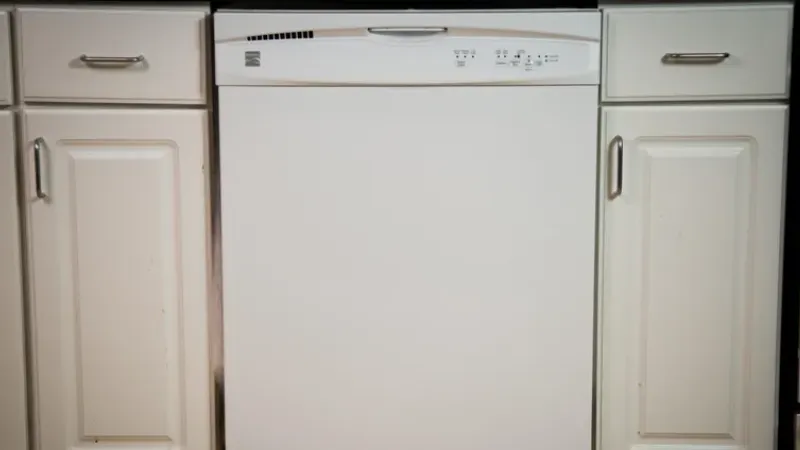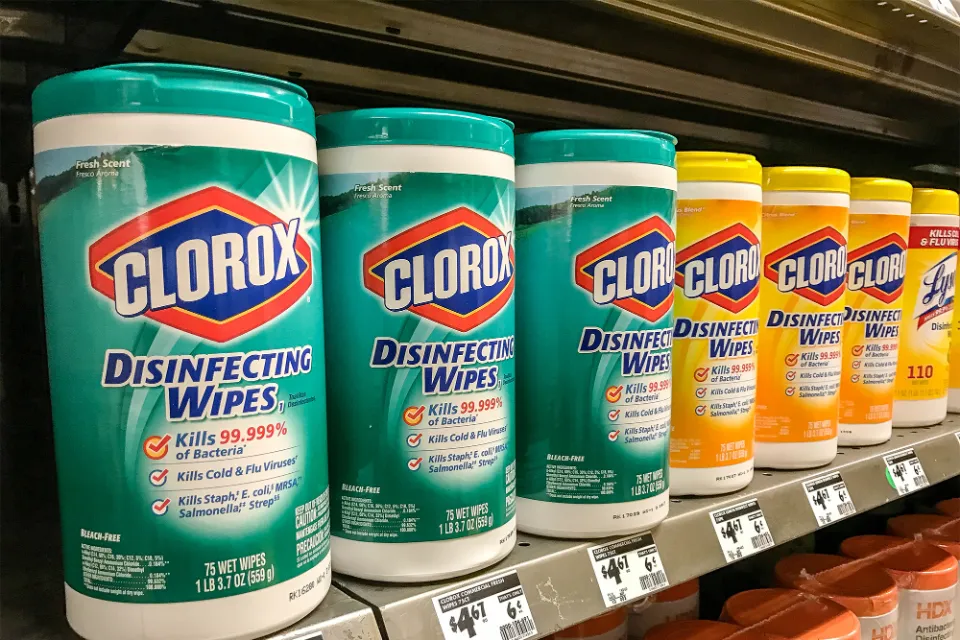You may have asked how long do Kenmore dishwashers last. How do you know when your dishwasher needs to be replaced? What to consider when looking for a kenmore dishwasher?
Kenmore dishwashers have a lifespan of 10 to 15 years on average. As with any other device, the lifespan of a Kenmore dishwasher, when used properly, depends on how you use it. Kenmore dishwashers can last more than 15 years if used correctly according to the manufacturer’s instructions.
Keep reading.
How Long Do Kenmore Dishwashers Last?
The average life expectancy of a dishwasher is ten years. However, when used under the right conditions and used properly, a dishwasher is expected to last up to 10 years.
Although different dishwashers have various life expectancies, this is basically because of the nature of items used in making the dishwasher; even at that, a dishwasher should last up to ten years.
Even though the life expectancy of a dishwasher is ten years, many factors may affect their functioning, thereby reducing their total lifespan.
These factors include poor operating habits, which are often caused by the ineffectiveness of operators. Consequently, the right way to use any appliance is by working with the manufacturer’s guide.
However, when operating outside the directory, dishwashers may become faulty.
Improper connectivity is another factor that is likely to reduce the lifespan of a dishwasher.
It is a regular recommendation that major home appliances such as dishwashers possess dedicated outlets and circuits.
This often reduces the possibility of having circuits damaged, which results from sharing the circuit.
However, improper connectivity may result from the wiring besides not using a dedicated circuit.
When you connect a dishwasher to a circuit with faulty wiring, it could be damaged even if it is new.
In addition, with a fault in the connectivity, the lifespan of a dishwasher may be cut short, therefore, it is important to check connections and strictly adhere to the manufacturer’s guide to use a dishwasher up to its expectancy period.
How long do dishwashers last? The guide will include various dishwasher lifespans. Use this guide to prolong the life of your dishwasher and keep it in good working condition.
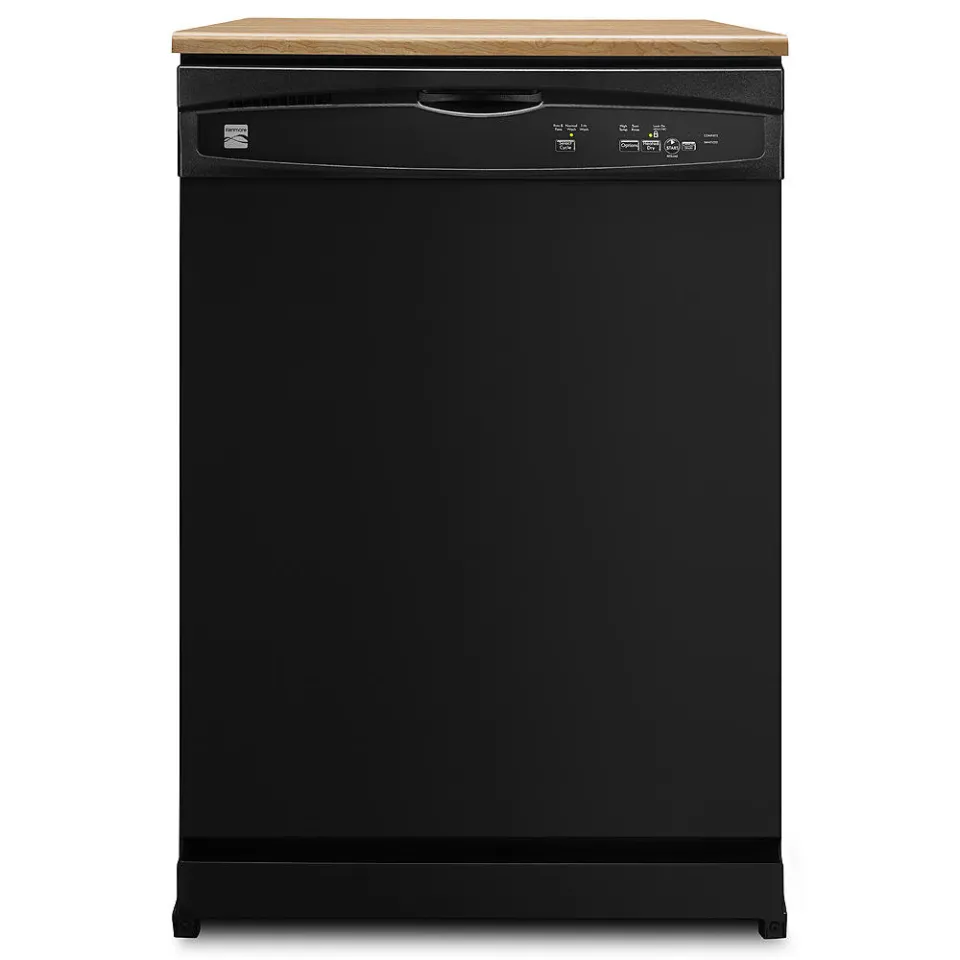
How Do You Know When Your Dishwasher Needs to Be Replaced?
While many home appliances are likely to work normally still even when there’s a need for a replacement, others display faults in their functioning and sometimes stop working completely.
It may be necessary to replace the old one when faults or complete breakdowns occur.
Similar to this, a dishwasher may exhibit some functional flaws that call for replacement.
Some indicators that a dishwasher needs replacement include the following:
Poor drainage after doing the dishes: most times under normal circumstances, poor drainage occurs from food remnants clogging in the dishwasher preventing water from being drained.
Apart from food particles, stray utensils may cause clogging too, but when poor drainage frequently occurs even when no food particles are blocking, it is a clear indicator of a need for replacement.
When the dishwasher door won’t lock properly, you may have overloaded the appliance while doing the dishes, which will keep the door from locking properly.
This often results in some utensils being pushed too close to the door, causing it not to lock properly.
When a dishwasher needs a replacement, the dishwasher door may not lock properly even when no items are preventing the door from closing. In some cases, the door may close immediately, but later it might reopen.
This is a clear sign that the dishwasher needs to be replaced with a new or properly functioning one.
An important indicator that a dishwasher needs replacement is when there is a fault in the water heater, which constitutes the main feature of a dishwasher; when the heater is not working properly, dishes are often left cold.
Furthermore, the heater functions in completing the cleaning process of dishes, a fault in this feature show that dishes will not get proper cleaning hence a need for replacement.
Presence of leakage: a leaking dishwasher will leave water pouring out from the machine, most times very little water, and sometimes much water leaks out.
A dishwasher does not leak out water; when this occurs, it indicates that the dishwasher needs to be replaced.
How long do dishwasher pods last? In this post, we’ll discuss the warning signs you should watch out for if you suspect that the pods you bought may have expired.
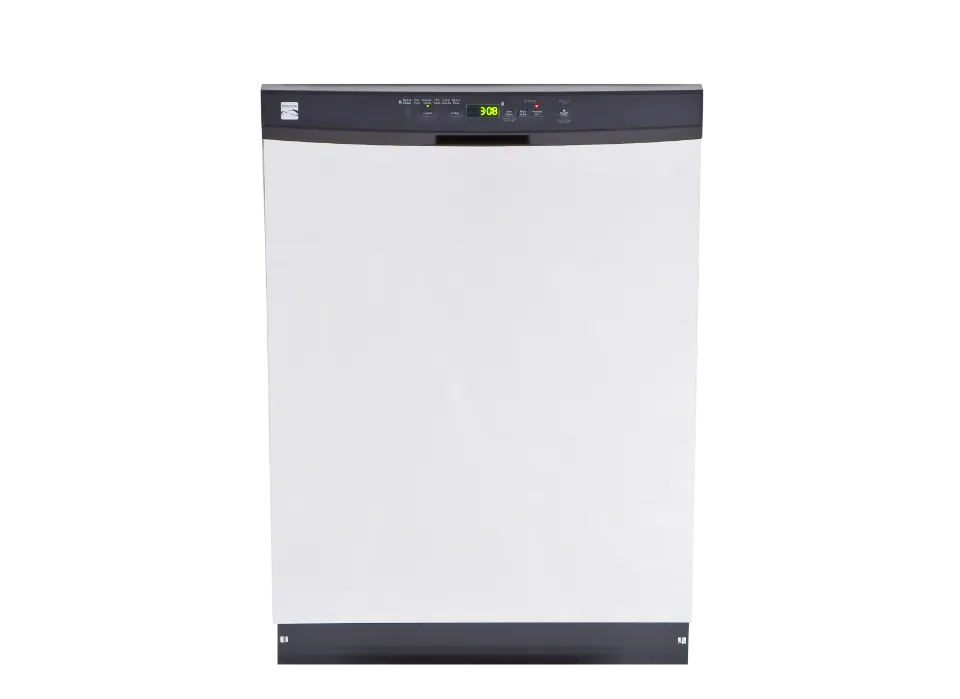
Is It Worth Fixing a Dishwasher?
Whether or not to fix a dishwasher depends on how long the dishwasher has been in use and the level of damage on the dishwasher.
Typically, when a new or fairly used dishwasher develops faults, it is important to fix the defect if the defects are not beyond repair and not so expensive.
It is usually preferable to replace a dishwasher once it has reached the end of its useful life, but if the problems are minor and not too expensive to fix, you can do so.
Another factor to consider when fixing a dishwasher, especially an old one, is if the fault is continuous to a particular part.
When the same part of a dishwasher constantly gets faulty and fixed, it is often better to get a lasting solution, usually getting a new one or using very good and lasting parts for replacement.
But significantly, if a dishwasher is worth fixing, it should be improved, but you should consider a replacement if it is not.
What to Consider When Looking for a Kenmore Dishwasher
Sizes
You can only get a 24-inch Kenmore dishwasher. If you’re looking for a standard-sized model, this isn’t an issue. However, those looking for compact dishwashers will have to look elsewhere. Consider Whirlpool dishwashers if you’re looking for an 18-inch model. Check out our Whirlpool dishwasher model guide.
Consider a 24-inch dishwasher with at least 12 place settings if you have a household of three or more. More on dishwasher place settings later. To install the standard-sized dishwasher, make sure the opening has a width of about 24 to 25 inches, a height of about 34 to 35 inches, and a depth of between 25 to 26 inches, give or take a couple of inches.
Noise Levels
As we mention in this article, we like to consider dishwashers with a decibel level of 52 dBA or less when looking for dishwashers. At this level, you’ll be able to hear the dishwasher in the background, but it won’t be too distracting.
Kenmore has categorized its dishwashers into standard, quiet, and whisper-quiet. The standard models have a noise level of 51 dBA and over; quiet models are rated at 46 to 50 dBA; whisper-quiet Kenmore dishwashers emit 45 dBA and below.
Kenmore’s loudest dishwasher has a sound level of 56 dBA. This isn’t overly loud, but it might be distracting if you have an open-plan space. These are also the lowest-priced models.
The company’s quietest models are part of the Kenmore Elite sub-brand, with a noise level of 39 dBA. At this level, you’ll barely hear the dishwasher running. However, they’re the most expensive dishwashers in Kenmore’s lineup.
You can strike a balance between cost and silence by opting for the ‘quiet’ line of dishwashers that have a noise level of up to 50 dBA.
Washing and Drying Performance
Find out, by reading user reviews, whether your preferred dishwasher does a good job. Look for complaints like food particles left on dishes at the end of a cycle, soap streaks on dishes, and so on.
Look out for features like hard-food disposers, dishwasher filters, and sensor cleaning—this helps improve the dishwasher’s performance. Also, consider the number of wash arms; the more the arms, the greater the area reached by water and vice versa.
The company’s dishwashers have different drying modes with varying levels of effectiveness. Consider one with sensor drying if you’re looking for a model with excellent drying performance. These are also the most expensive. Other models have unheated air drying or heated drying.
Tub Material
Consider a dishwasher with a plastic tub if you’re on a tight budget. However, you’ll have to contend with a lower heat threshold, meaning they potentially have lower washing and drying performance.
Plastic is also not as durable as stainless steel, so expect a shorter lifespan for these dishwashers. Stainless steel tubs are more popular because of their strength and resistance to high heat. They’re also better at absorbing dishwasher noise, making these models quieter than their plastic counterparts.
Dishwashers with stainless steel tubs are more expensive than plastic-tub models but consider these options since they will give you more years of use.
Place Settings and Racks
Consider the number of racks in the dishwasher, based on your household size and the number of dishes you have to wash each day. You want a dishwasher that can hold all your dishes irrespective of shape or size.
Kenmore’s dishwashers have at least 12 place settings with the higher-end models boasting up to 16 place settings. One place setting consists of 10 kitchen items. Check out this article to find out exactly how many of each kitchen item makes up a place setting.
If you have lots of cutlery and flatware, consider a dishwasher with a third rack. Also, look for a model with adjustable racks to enable you to make room for larger dishes when you need to.
Price of Kenmore Dishwashers (And Your Budget)
Kenmore’s lowest-priced dishwashers cost between $550 and $720. On the lower end, you will only get a dishwasher with a plastic tub. However, if you have a budget of $720, you can get a stainless steel model. The company mid-range models cost from about $780 to $1000. At this budget, you’ll have more options for stainless steel dishwashers as well as some fancy features like SmartWash.
The most expensive dishwasher in Kenmore’s lineup costs about $2000. If you’re ready to spend over $1000 then you’ll get features like a third rack. The company’s portable dishwashers all cost about $1040.
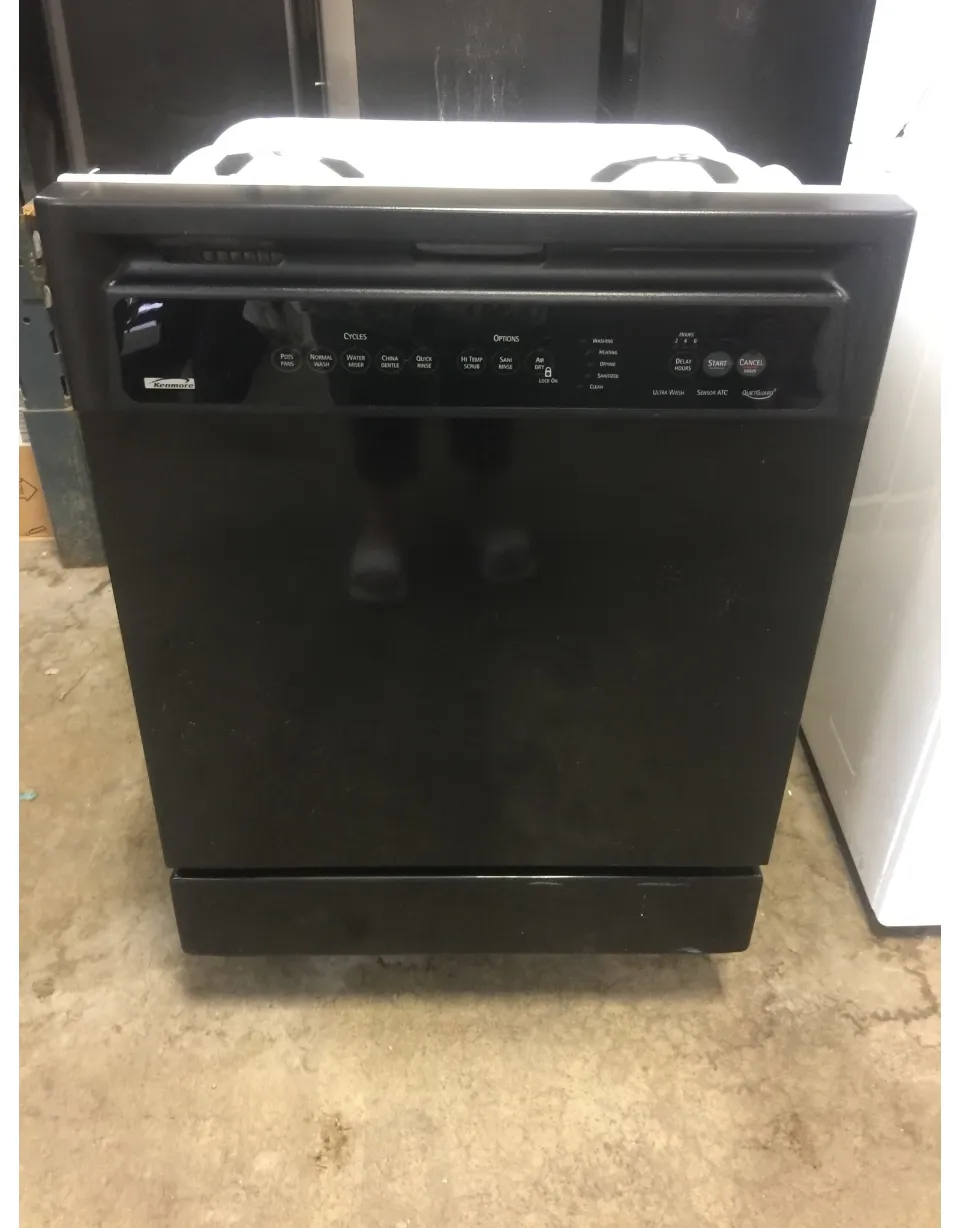
Care and Maintenance
maintenance tasks
Some areas of the dishwasher require occasional maintenance. Maintenance tasks are easy to complete and will ensure that the dishwasher continues to deliver excellent performance:
- removal of spills and spills
Water can sometimes spill out of the dishwasher, especially if you interrupt a cycle or open the dishwasher door in the middle of a cycle. To avoid floor damage and possible mold growth, do not leave wet areas around or under the dishwasher.
- clean stainless steel interior doors and bathtubs
Clean the outer edges of the inner panel of the door regularly to remove debris that may have accumulated due to normal loading. If spots start to appear on the stainless steel drum or inner door, make sure the rinse reservoir is full.
- clean drain gaps
Clean the drain holes regularly to ensure that the dishwasher drains properly. For most types, you can lift the chrome cover. Unscrew the plastic cover. Then check if there is soil accumulation. Clean if necessary.
- inspect and clean the spray arm nozzle
Check the nozzle occasionally to make sure the nozzle nozzle (hole) is unobstructed. You must remove the gun arm to check if it is blocked.
Remove the top gun arm:

- Remove the empty top shelf from the dishwasher.
- Turn the rack upside down. As shown in the image above, the top spray arm is held in place by a lock nut. Release the gun arm by rotating the lock nut counterclockwise and removing it as shown in the image above.

- Remove the spray arm as shown above.
- Look for obstacles in the nozzle.
- If you need to clean the nozzle, rinse it with tap water.
To reinstall the top gun arm:
- Return the top spray arm to its mounting position.
- Return the lock nut to the mounting position and turn it clockwise 1/8 turn.
- Place the top rack back on the top rack roller rails.
Attention
To avoid injury, do not stick your fingers into large object traps. Large object traps may contain sharp objects.
Remove the bottom spray arm:
- Remove the empty bottom shelf from the dishwasher bucket.
- As shown in the image below, grab and lift the bottom spray arm.

- Look for obstacles in the nozzle.
- If you need to clean the nozzle, rinse it with tap water.
To reinstall the bottom spray arm:
- Return the bottom spray arm to its mounting position and press it once to snap it into place.
- Return the bottom rack to its mounting position.
- inspect and clean the filter system
The dishwasher has a filter system consisting of a large object trap/cartridge filter assembly and a fine filter. Some models come with an additional microfilter.
The filter system is located under the lower bracket inside the dishwasher and is easy to use. During normal use, the filter system is self-cleaning. You should check it occasionally for foreign bodies and clean it if necessary.
To remove the Large Object Trap/Cylinder Filter assembly:
- Remove the bottom rack.
- Grasp the component and rotate counterclockwise
– Rotate 1/4 turn as shown in the image below. 
- As shown in the following figure, lift the component.
- Double-check the assembly. If you find debris in a large object trap, turn it upside down and gently tap on a surface such as a countertop to remove and remove debris.

- Rinse the cylinder filter under running water.
To reinstall the filter system:
- Return the fine filter to its original mounting position.
- Place the Large Object Trap/Cylinder Filter assembly in the installation position on the dishwasher floor.
- Turn the ring handle clockwise 1/4 turn until locked.
- Gently pull the ring handle to ensure the assembly is locked in place.

- cleaning exterior door panels
Colored doors
Gently wipe using only a soft damp cloth, soaked in soapy water.
Stainless steel door
Use a soft cloth and clean the stainless steel with a non-abrasive cleaner (preferably a liquid spray). For best results, apply stainless steel cleaner to a cloth and wipe the surface.
- clean the interior
Hard water minerals can cause a white film to accumulate on the inner surface, especially just below the door area. Do not clean the dishwasher until it has cooled inside. Wear rubber gloves. Do not use other types of detergents other than dishwasher cleaners as it may cause foaming or foaming.
- Make paste with powdered dishwasher detergent on ads damp sponge and clean.
OR - Use liquid automatic dishwasher cleaner and clean with a damp sponge
- cleaning doormat
Clean the doormat regularly with a damp cloth to remove food debris and other debris. Also clean the door seal located at the bottom of the dishwasher’s inner door.
- dishwasher freeze protection
If your dishwasher will not be used for a long time in a place with a high freezing temperature (for example, in a holiday home or throughout the holiday), have the dishwasher frost-protected by an authorized service center.
Troubleshooting
Dishwashers can sometimes have problems unrelated to the failure of the dishwasher itself. The following information may help you solve your dishwasher problem without the need for a service professional. The items listed in the table below may not be covered by your product warranty.





FAQs
How Much Water Does Kenmore Dishwasher Use?
As much as we want to save time and effort, saving water is a great addition too! Gladly, Kenmore also incorporated another feature to the Elite dishwasher, the MicroClean Wash System Filter.
The machine uses only up to 3.19 gallons of water per cycle thanks to this innovation, which filters out particles as small as 150 microns and can save up to two gallons of water. By eliminating 13 minutes from the run time, this innovation also increases the machine’s time efficiency.
Where is the Filter in a Kenmore Elite Dishwasher?
Is the dishwasher taking longer to finish? The filters for a Kenmore Elite can be found in the bottom center of the dishwasher; make sure to check them. They must catch and hold particles to prevent their redeposition onto the dishes.
If the filters are clogged, the machine may take longer to finish a cycle, or worse, you may need to wash the dishes all over. For the dishwasher to operate at its best, it is best to routinely clean the filters as well.
How Do You Clean the Filter on a Kenmore Dishwasher?
For optimum performance, Kenmore claims that filters in an Elite dishwasher should be taken out and cleaned at least once a month, or whenever a glaring symptom—such as particles beginning to accumulate or oily dishes that persist even after washing—appear.
The filters must first be removed before being cleaned under running water. Once all soils have been removed, rinse the filters under running water. To remove tough, stubborn soils, you might need a soft brush.
Summary: How Long Do Kenmore Dishwashers Last?
How long Kenmore dishwashers last is dependent on their use and the conditions available when the dishwashers are in use.
Despite being of high quality, Kenmore dishwashers might not last very long if not used correctly.
Therefore, getting a dishwasher to last for a long time is dependent on how well you use it.
If you have any questions, please leave a comment. My Prime Home tries to give you the best home improvement information. Don’t forget to share the post. Thank you for reading.
You may want to know:
- How Long Do Bosch Dishwashers Last?
- How Long Do GE Dishwashers Last?
- How Long Does A Whirlpool Dishwasher Last?
- How Long Do KitchenAid Dishwashers Last?
- How Long Does A Frigidaire Dishwasher Last?
- How Long Do Asko Dishwashers Last?
- How Long Do Maytag Dishwashers Last?
- How Long Do Miele Dishwashers Last?
